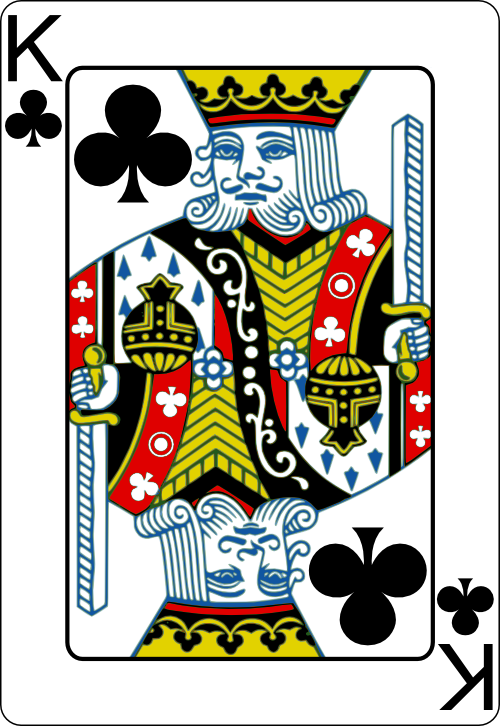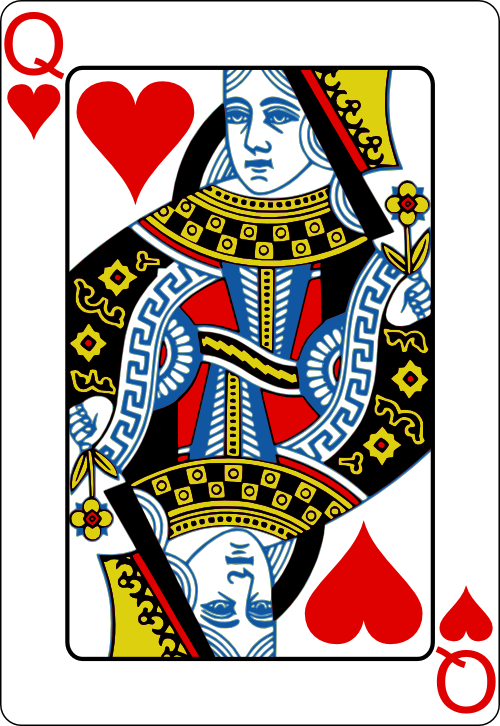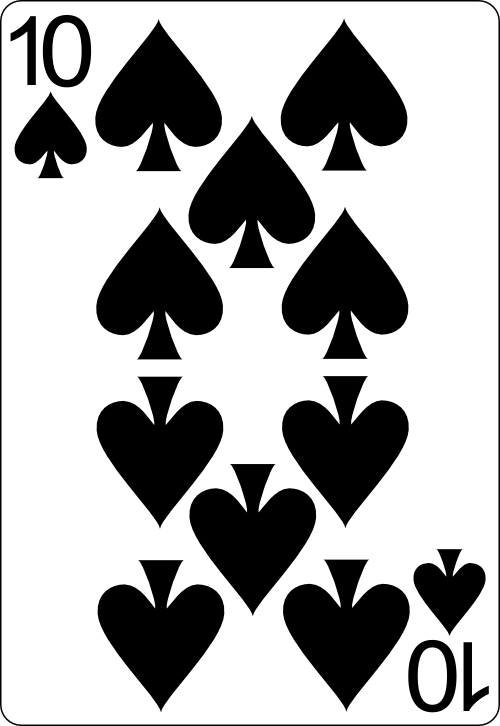Understanding Poker Hand Ranges
The first step in mastering strategic poker play revolves around understanding and applying the concept of poker hand ranges. This concept forms the foundation of many strategic decisions in poker, offering insights into the opponent’s possible holdings and allowing players to make educated guesses about their play.
What is a Poker Hand Range?
A poker hand range refers to the set of hands that a player could potentially have in a given situation. It is not a specific hand but rather a spectrum of hands that a player can hold based on their style of play, their position, and the action that has taken place.
For example, an aggressive player’s range in early position might include high pairs, high suited connectors, and high unsuited connectors. By contrast, a conservative player’s range in the same position might only include high pairs and high suited connectors.
Understanding the poker hand range is a dynamic process. As the game progresses, the range narrows down based on the player’s actions. For example, if a player raises pre-flop, their range may narrow down to high pairs, high suited connectors, and high unsuited connectors. If they continue to bet post-flop on a low board, their range might further narrow down to high pairs.
Importance of Poker Hand Ranges in Strategy
Incorporating poker hand ranges into your strategy is crucial for several reasons. First, it allows you to make more informed decisions about how to play your hand. By having a rough idea of the hands your opponent might hold, you can tailor your own play to either exploit their weaknesses or protect against their strengths.
Secondly, understanding poker hand ranges can help you to predict your opponent’s actions. If you know the range of hands they typically play, you can anticipate their likely moves and plan your own strategy accordingly.
Finally, a good grasp of poker hand ranges can aid in bluffing and reading bluffs. Knowing the possible hands within your opponent’s range can give you insight into whether they may be bluffing. Similarly, being aware of your own range can help you bluff more convincingly.
In conclusion, understanding poker hand ranges is a fundamental aspect of poker strategy that can significantly improve your decision-making process. Whether you’re trying to figure out if your pair of aces is ahead, deciding whether to bluff, or trying to decipher if your opponent is bluffing, understanding hand ranges is a crucial tool. To learn more about other strategic aspects of poker such as bluffing in poker or poker bet sizing strategy, feel free to explore our other articles.
Poker Hand Selection
One of the fundamental aspects of a solid poker strategy involves making appropriate hand selections. Carefully choosing the hands you decide to play, and understanding the concept of a poker hand range can significantly impact your overall game.
Starting Hands and Hand Ranges
A poker hand range refers to the set of hands that a player could potentially hold in a given situation. The range can be wide (including many possible hands) or narrow (including fewer possible hands), depending on the player’s strategy and the specific game situation.
The starting hands you play are a critical factor in defining your hand range. The best starting hands are typically those that have a high probability of becoming a strong poker hand after the flop. This includes premium hands like high pairs or suited connectors. Our article on poker hand rankings provides a comprehensive overview of the strength of different poker hands.
High Pairs
 A♦️ |    A♠️ |
  K♦️ |   K♣️ |
   Q♣️ |    Q♥️ |
Suited Connectors
  J♠️ |   10♠️ |
  Q♣️ |    Q♥️ |
High Cards
   A♠️ |   K♥️ |
   A♦️ |    K♣️ |
Choosing to play only the strongest starting hands will result in a narrow poker hand range, while deciding to play weaker hands will lead to a wider range. The key to an effective hand selection strategy is to find a balance that suits your playing style and the dynamics of the game.
Adjusting Hand Ranges Based on Position
The position you’re in at the poker table can have a significant impact on your hand range. In early position, where you’re one of the first to act, it’s generally advised to have a tighter hand range. This is because there are many players to act after you, and holding a strong hand is crucial to withstand potential raises.
| Position | Hand Range |
|---|---|
| Early Position | Tight (Strong hands) |
| Middle Position | Moderate (Strong and some speculative hands) |
| Late Position | Loose (Wide range of hands) |
In contrast, when in a late position, you can afford to have a wider hand range. This is because you have more information about your opponents’ actions and can make more informed decisions about your hand.
Adjusting your hand range based on your position is a fundamental aspect of poker strategy and is crucial for maximizing your winnings. It’s also essential to consider factors such as your opponents’ playing styles, the size of the blinds, and the size of the pot. For more detailed strategies on adjusting your play based on position, check out our article on 3-betting in poker.
In summary, understanding and manipulating your poker hand range based on the starting hands and your position at the table can significantly improve your poker strategy. By carefully selecting your hands and adjusting your range, you can manipulate your opponents and increase your chances of winning.
Bet Sizing Strategy
Integrating bet sizing strategy with a solid understanding of poker hand range can significantly improve your poker gameplay. It allows you to manipulate the pot size, control the flow of the game, and influence your opponent’s perception and decision-making process.
Bet Sizing and Hand Ranges
Your betting size can provide clues about your hand range, or the possible combinations of hands you might hold. Players often adjust their bet sizes based on the strength of their hand – betting big with strong hands and betting small with weaker hands. However, varying your bet size too predictably can make you easy to read.
For instance, if you always bet half the pot with a strong hand and a quarter of the pot with a weak hand, observant opponents will quickly catch on. A more sophisticated strategy involves varying your bet sizes within your hand range. This way, your betting size doesn’t give away the strength of your hand.
To better understand the strategy, let’s consider a scenario:
| Hand | Bet Size |
|---|---|
| Strong | Half the pot |
| Medium | Third of the pot |
| Weak | Quarter of the pot |
By maintaining a consistent betting size regardless of your hand strength, you can keep your opponents guessing and prevent them from accurately predicting your hand range. To delve deeper into this topic, check out our article on poker bet sizing strategy.
Influence of Bet Sizing on Opponent’s Perception
The size of your bet can greatly influence how your opponents perceive your hand range. By being mindful of your bet sizing, you can manipulate your opponents’ perception of your hand strength and potentially lead them to make incorrect decisions.
For instance, a larger bet might indicate a strong hand, making your opponents cautious and more likely to fold. Conversely, a smaller bet may give the impression that you have a weak hand, enticing your opponents to call or raise.
However, you should be aware that experienced players will be analyzing your bet sizing patterns to understand your hand range. As such, it’s essential to mix up your bet sizes to keep your opponents on their toes and prevent them from making accurate predictions about your hand range.
When considering your bet sizing strategy, it’s also important to factor in pot odds, implied odds, and the potential for future bets. Understanding these concepts can help you make more informed decisions about your bet size. For more insights, check out our articles on pot odds in poker and implied odds in poker.
In conclusion, bet sizing is a crucial component of any successful poker hand range strategy. By understanding and effectively applying these concepts, you can control the game dynamics, disguise your hand strength, and manipulate your opponents’ decisions to your advantage.
Bluffing and Hand Ranges
In the complex game of poker, bluffing is a powerful strategy that can often turn the tables in your favor. However, effective bluffing requires a deep understanding of the poker hand range concept. This section will delve into the intricate relationship between bluffing and hand ranges.
Bluffing Within Your Range
Bluffing within your range is about making bets or raises with hands that are not necessarily the best, but fall within a reasonable range of hands you might have in a given situation. This strategy is based on the principles of deception and unpredictability, which are essential for success in poker.
When bluffing, it’s crucial to consider your perceived range, which is the range of hands your opponents believe you might have. By making moves consistent with your perceived range, you can convince your opponents that you have a stronger hand than you actually do. This can lead to them folding better hands, allowing you to win pots you might otherwise lose.
A common strategy for bluffing within your range involves the concept of 3-betting. This involves making a pre-flop re-raise with a range of hands that includes both strong hands (for value) and weaker hands (as bluffs).
For example, if your opponent raises and you 3-bet with a range of strong hands like AA, KK, and QQ and weaker hands like 76 suited or A5 suited, you create a balanced range that can be difficult for your opponents to play against.
Reading Opponent’s Bluffing Range
Equally important to bluffing within your range is the ability to read your opponent’s bluffing range. This requires keen observation skills and a deep understanding of poker hand rankings.
Paying attention to an opponent’s betting patterns, playing style, and physical tells can provide valuable clues about their potential hand range. If their actions are inconsistent with the range you’ve assigned to them, there’s a good chance they may be bluffing.
For instance, if an opponent who usually plays conservatively suddenly makes a large bet, they might be bluffing to scare off other players. Conversely, if a typically aggressive player suddenly checks or makes a small bet, they might have a weak hand and be trying to lure others into the pot.
Understanding bluffing ranges can also be particularly useful when considering pot odds and implied odds. If you can accurately estimate your opponent’s bluffing range, you can make more informed decisions about when to call, fold, or raise.
Mastering the art of bluffing within your range and reading your opponent’s bluffing range can significantly improve your poker game. This, coupled with an effective poker bet sizing strategy, can give you a significant edge over your opponents.
Manipulating Opponents with Hand Ranges
Understanding and adjusting your poker hand range can significantly improve your ability to manipulate your opponents. This strategy involves adjusting your range based on your opponent’s style and using hand ranges to exploit their weaknesses.
Adjusting Your Range Based on Opponent’s Style
Different players have different styles of play, and as such, your poker hand range should adjust accordingly. For example, if your opponent tends to play tight and conservative, you might want to widen your range to include more aggressive plays and bluffs. Conversely, if your opponent is loose and aggressive, you might want to tighten your range, focusing on playing strong hands and exploiting their over-aggression.
| Opponent’s Style | Adjustment |
|---|---|
| Tight and Conservative | Widen your range |
| Loose and Aggressive | Tighten your range |
Knowing your opponents’ style can help you anticipate their moves and adjust your own range to counteract their strategy. This approach can be particularly effective in multi-table tournaments, where you have the opportunity to observe and analyze your opponents’ play over a longer period of time.
When adjusting your range, it’s also important to consider your position at the table. In late position, you can afford to play a wider range of hands, as you have more information about your opponents’ actions. In early position, however, it’s typically best to stick to a narrower range of high-quality hands. For more about this topic, read our article about 3-betting in poker.
Using Hand Ranges to Exploit Opponent’s Weaknesses
In addition to adjusting your range based on your opponent’s style, you can also use hand ranges to exploit your opponent’s weaknesses. For instance, if your opponent often folds to aggression, you can bluff more frequently within your range.
| Opponent’s Weakness | Strategy |
|---|---|
| Folds to Aggression | Bluff more within your range |
On the other hand, if your opponent has a tendency to chase draws, you can adjust your betting strategy to charge them more for their potential draws, maximizing your expected value. This strategy involves understanding and applying concepts such as pot odds and implied odds.
Understanding your opponent’s weaknesses and how to exploit them is a key part of successful poker strategy. By adjusting your hand range and betting strategy based on your opponent’s tendencies, you can manipulate the action to your advantage and increase your profitability at the poker table. For more tips about this topic, don’t miss our article about poker bet sizing strategy.
Practicing Hand Range Analysis
As with any skill, improving your understanding and application of poker hand range requires consistent practice and analytical thinking. Here, we share some tips for enhancing your hand range analysis and point out common mistakes to avoid.
Tips for Improving Hand Range Analysis
- Study hand rankings: Familiarize yourself with poker hand rankings and understand the strength of each hand in various situations. This will help you better estimate your opponents’ hand ranges.
- Observe your opponents: Pay close attention to your opponents’ playing styles, betting patterns, and tendencies. This can provide valuable insights into their potential hand ranges.
- Practice range estimation: Regularly practice estimating your opponents’ hand ranges in different situations. This can be done during live games or through poker training software.
- Think in terms of ranges, not specific hands: Avoid the pitfall of trying to put your opponent on one specific hand. Instead, always think in terms of ranges.
- Consider position and betting: Factor in the position and betting actions of your opponents when estimating their hand ranges. For instance, a 3-bet from early position is typically indicative of a stronger range.
- Review your hands: After each session, review your hands and reflect on your hand range estimations. This will help you identify areas for improvement.
- Learn about pot odds and implied odds: Understanding pot odds and implied odds can significantly enhance your hand range analysis, as they help assess the potential profitability of your decisions.
Common Mistakes to Avoid When Using Hand Ranges
- Overestimating hand strength: One common mistake is overestimating the strength of your hand and underestimating the range of hands your opponent could have. Always consider the full range of possible hands, not just the ones you hope they have.
- Ignoring position: Position is a crucial factor in poker. Ignoring it can lead to inaccurate hand range estimations. Generally, players tend to play tighter ranges from early positions and wider ranges from late positions.
- Failing to adjust to opponents’ tendencies: If you’re not adjusting your hand range assumptions based on your opponents’ tendencies and playing styles, you’re likely missing out on valuable information.
- Neglecting bet sizing: The size of your opponents’ bets can give you clues about their hand ranges. For example, a large bet might suggest a strong hand, while a small bet might suggest a weaker range. Learn more about this in our poker bet sizing strategy article.
- Overusing bluffing ranges: While bluffing is an important part of the game, overreliance on bluffing ranges can lead to predictability. Balance your range by including both value hands and bluffs.
By practicing hand range analysis and avoiding common mistakes, you can significantly improve your poker strategy and increase your chances of success at the tables. Remember, mastering poker hand range is a process that requires patience, practice, and continual learning.

